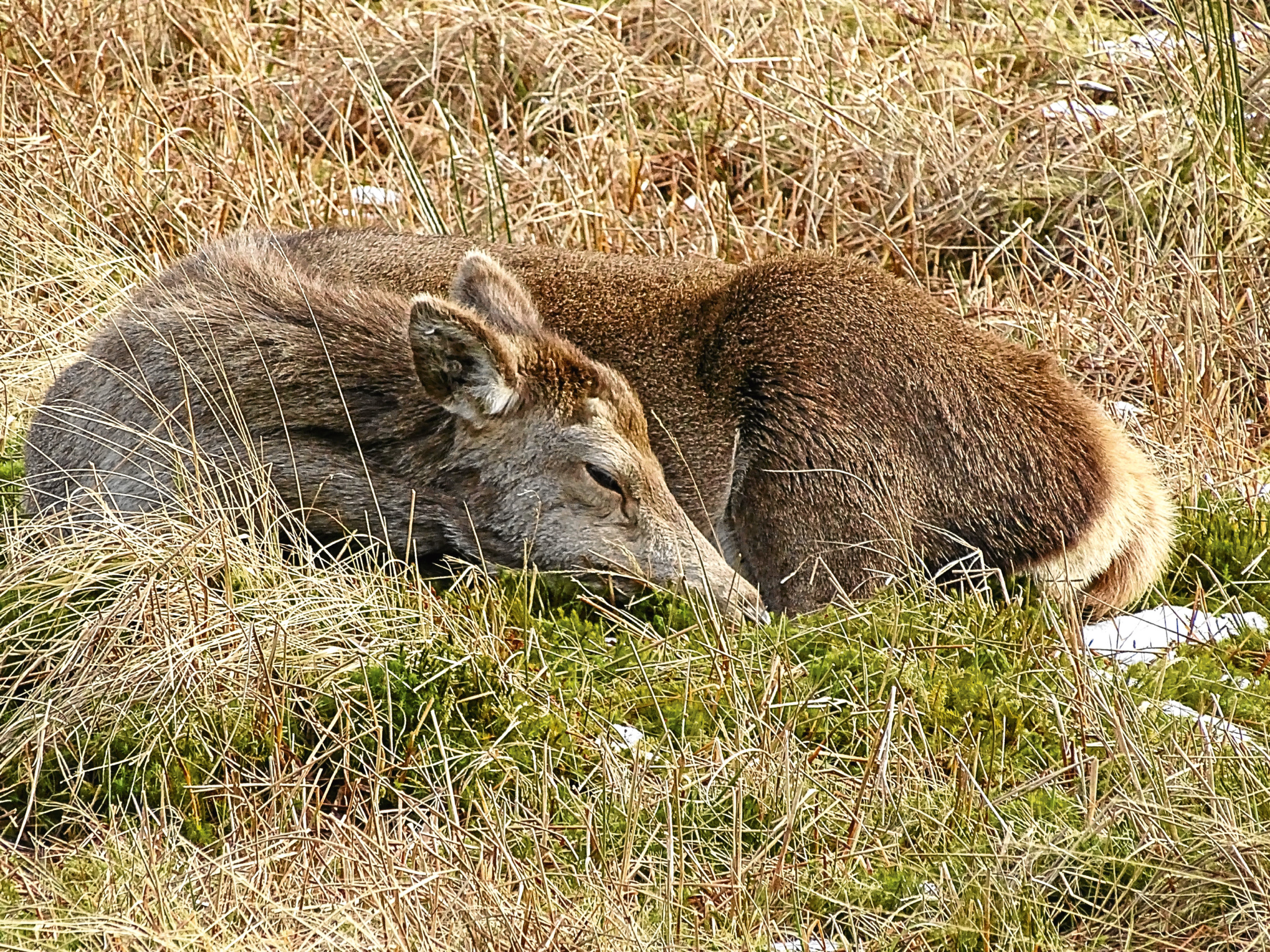I had to climb the Rannoch-Moor- facing flank of Beinn a’ Chrulaiste.
Just below the watershed I had to sit in the sun on a pink rock in the middle of the burn. I had to write something I needed for the end of the book I’m working on.
It’s a book about winter and I was watching the end of winter.
Sometimes, mine is an unusual job.
If you don’t know Beinn a’ Chrulaiste, it’s the unprepossessing mountain across the Glencoe road from Buachaille Etive Mor. It is also one of my favourite mountains anywhere because of what it reveals.
There is a book I consider to be the finest work of nature writing. It’s called A Sand County Almanac by American ecologist Aldo Leopold.
In a chapter called Thinking Like A Mountain he addressed the relationship between deer and wolves: “…I have lived to see state after state extirpate its wolves. I have watched the face of many a newly wolfless mountain, and seen the south-facing slopes wrinkle with a maze of new deer trails. I have seen every edible bush and seedling browsed…to death…Such a mountain looks as if someone had given God new pruning shears and forbidden Him all other exercise…I now suspect that just as a deer herd lives in mortal fear of its wolves, so does a mountain live in mortal fear of its deer.”
Beinn a’ Chrulaiste is one such mountain, and because wolves and deer and Rannoch Moor were part of my purpose on the mountain. And because of the red deer hinds clustered around the car park of the Kingshouse when I parked there.
Such an occurrence is by no means unusual in Highland Scotland, which has been wolfless for more than 200 years, and in that time the deer have forgotten how to behave like deer.
The presence of wolves keeps the herds on the move, so the impact of their relentless grazing is reduced.
I have written often that the reintroduction of wolves to Scotland should begin in a wilderness national park extending from the Black Wood of Rannoch and Rannoch Moor in the east to the shore of Loch Etive in the west. I asked Beinn a’ Chrulaiste what it thought of the idea and it agreed with me.
Back at the car park, a tourist minibus had decanted its passengers beside the deer, some of which had walked right up to the bus in expectation of being hand-fed. Once the bus had gone they went back to browsing and drowsing.
One grey-faced old hind lay in a flat-out curve on the grass. She hadn’t moved to greet the bus. When she lay with her chin in the moss and her ears erect (and with the notable absence of a thick tail to wrap round her muzzle), there was a moment I thought she looked just like an old wolf.
One of Leopold’s students at the University of Wisconsin was Paul Errington, who went on to become an international authority on predation in nature. He wrote in 1967: “Of all the native biological constituents of a northern wilderness scene, I should say that the wolves present the greatest test of human wisdom and good intentions.”
Watching the old hind with the wolf face I thought that 50 years later, it’s time to put our wisdom and good intentions to the test. It’s long past time.
